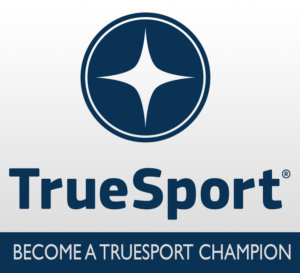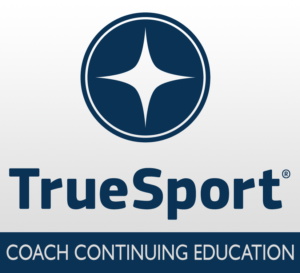Is Your Athlete Using Supplements? Here’s How to Minimize the Risks
USA Cheer has partnered with TrueSport, to provide new educational tools to equip coaches, parents and young athletes with the resources to build life skills and core values for success in sports and in life. TrueSport, a movement by the U.S. Anti-Doping Agency, inspires athletes, coaches, parents, and administrators to change the culture of youth sport through active engagement and thoughtful curriculum based on cornerstone lessons of sportsmanship, character-building, and clean and healthy performance, while also creating leaders across communities through sport.
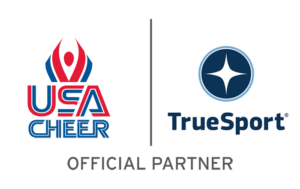
Is Your Athlete Using Supplements? Here’s How to Minimize the Risks

Tammy Hanson, Director of Elite Education, USADA
Most sport parents have heard their athletes talk about how much they need this or that supplement to perform better, stay healthier, or train harder. If your athlete is set on supplements, you can help them minimize the risks from those products by understanding red flags, identifying high-risk supplements, and using only third-party certified supplements.
Here, Tammy Hanson, Director of Elite Education at the U.S. Anti-Doping Agency (USADA), explains how to minimize the health and anti-doping risks from supplements.
- Understand the Potential Risks from Supplements
Dietary supplements come in many forms, including gels, protein powders, and multi-vitamins. These products are regulated post-market, which means that neither the Food and Drug Administration (FDA) nor any other regulatory body evaluates the contents or safety of supplements before they are sold online and at major retailers.
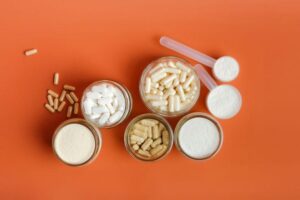 Even though there are many safe supplements on the market, post-market regulation makes it very hard to determine which products are truly safe and actually contain what’s listed on the labels. Contamination and the use of unhealthy, low-quality, or unlisted ingredients continues to be a big problem in the growing supplement industry.
Even though there are many safe supplements on the market, post-market regulation makes it very hard to determine which products are truly safe and actually contain what’s listed on the labels. Contamination and the use of unhealthy, low-quality, or unlisted ingredients continues to be a big problem in the growing supplement industry.
“We know that the majority of ingredients are being outsourced from other countries, which increases the risk of cross-contamination,” explains Hanson. “Supplement companies can leave out or omit ingredients on the ingredient list. They can change the name of ingredients. Yes, the FDA can pull something off store shelves if they deem it unsafe—but only after they’ve deemed it unsafe, which could be too late.”
Given the potential for unknown ingredients and quantities of those ingredients, some supplements pose a health risk, and unfortunately, there are many documented cases of this issue. Some supplement companies may also intentionally use potent ingredients that increase the effects of the product but are prohibited for athletes subject to anti-doping rules.
- Recognize Red Flags
Researching supplements and recognizing red flags can help consumers reduce their risk if they decide to use supplements. You can start researching supplements by checking to see if the product or manufacturer is on the USADA High Risk List or the FDA Tainted Supplements list before use. These lists are not all inclusive, but they are a good starting place for ruling out risky supplements known to be contaminated or contain harmful ingredients.
You should also consider these red flags while evaluating and researching any supplement you might use.
- Products sold exclusively on the internet may be risky, as some companies try to avoid regulations this way.
- Some products list ingredients by chemical names to deliberately confuse consumers.
- Products that make claims like “newest scientific breakthrough” and “quick fix” are risky.
- Products that claim to treat or prevent a disease, or be “an alternative to prescription medication” are risky.
- Products that claim to be “FDA Approved” or “USADA Approved” are risky – these organizations don’t approve supplements.
More information about red flags is available here.
- Use Third-Party Certified Supplements
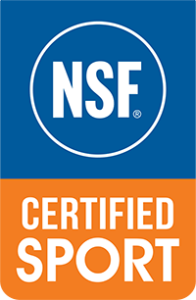 Third-party certification simply means that products are tested by an independent company to confirm that the product’s label matches its contents. If athletes choose to use supplements despite the known risks, USADA has always recommended that athletes use only dietary supplements that have been certified by a third-party program that tests for substances prohibited in sport. Even if your athlete isn’t subject to anti-doping rules or being tested, avoiding potentially contaminated supplements is good practice, and safer for your athlete.
Third-party certification simply means that products are tested by an independent company to confirm that the product’s label matches its contents. If athletes choose to use supplements despite the known risks, USADA has always recommended that athletes use only dietary supplements that have been certified by a third-party program that tests for substances prohibited in sport. Even if your athlete isn’t subject to anti-doping rules or being tested, avoiding potentially contaminated supplements is good practice, and safer for your athlete.
USADA doesn’t test products or offer certification, but it does currently recommend NSF Certified for Sport as the program best suited for athletes to reduce the risk from supplements. Look for the NSF Certified for Sport label on products, which means it has been tested by NSF not only to confirm that the product contains what it claims to contain, but also that it’s free of any substances that are banned by the World Anti-Doping Agency (WADA).
Some brands use “NSF Certified” and “NSF Certified for Sport” interchangeably in their marketing, so be sure to check on NSF for Sport’s website or app to ensure that the product is specifically tested for banned substances. Finally, when purchasing supplements, the safest way to purchase NSF Certified for Sport products is directly through that supplement company’s website rather than a third-party provider.
Takeaway
USADA and TrueSport recommend a ‘food-first’ approach to fueling whenever possible. The fewer supplements your athlete uses, the lower the potential for contamination risks. For example, if your athlete needs more calcium in their diet, prioritizing calcium-rich foods like yogurt and nuts and seeds provides not just calcium, but also other vital nutrients. Similarly, rather than using a whey protein supplement, opting for regular milk, silken tofu, or low-fat Greek yogurt in smoothies can provide the same amount of protein without risk of contamination.
What is TrueSport?
The TrueSport Champion Network is a community of coaches, parents, program directors, and athletes who believe in the power of youth sport to build life skills and core values for success both on and off the field. Join TrueSport Champion Network to help promote the positive values of cheer, dance, and STUNT!
The TrueSport Coaching Education Program empowers coaches—the most significant influencers in young athletes’ lives—with a transformative learning opportunity to obtain the knowledge and resources to cultivate, champion, and uphold the rich promise and highest potential of sport.
Additional Training Modules from TrueSport
USA Cheer is proud to partner with USADA’s TrueSport® to bring relevant educational content to the Cheer and STUNT community in order to promote a positive youth sport experience. We are excited to provide access to TrueSport’s experts that take coaching beyond skills and help truly develop the overall athlete by building life skills and core values for success on and off the mat, sideline, field, and court.
Feel free to share these resources with your coaching staff, parents, or athletes!
About TrueSport
TrueSport®, a movement powered by the experience and values of the U.S. Anti-Doping Agency, champions the positive values and life lessons learned through youth sport. TrueSport inspires athletes, coaches, parents, and administrators to change the culture of youth sport through active engagement and thoughtful curriculum based on cornerstone lessons of sportsmanship, character-building, and clean and healthy performance, while also creating leaders across communities through sport.
For more expert-driven articles and materials, visit TrueSport’s comprehensive library of resources.
This content was reproduced in partnership with TrueSport. Any content copied or reproduced without TrueSport and the U.S. Anti-Doping Agency’s express written permission would be in violation of our copyright, and subject to legal recourse. To learn more or request permission to reproduce content, click here.


